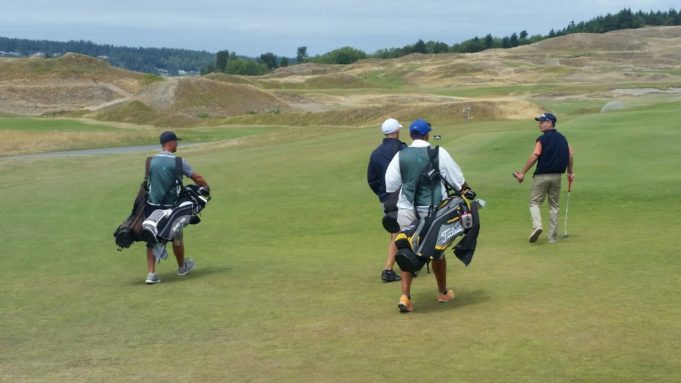If you think you have finally figured out the rules of golf, take a step back as more changes are on the way.
But relax, it’s a good thing.
“It’s still a long way out but our message is the 2016 rules still apply for this summer but with some major, significant changes you’ve got to get the word out to your players and your officials,” said Golf Canada’s Adam Helmer, Director Rules, Competitions & Amateur Status.
The upcoming changes are the most wide-reaching ones made to the historic game since the first rules were scribbled out back in 1744.
The rule book has now been thinned out to 24 rules instead of 34. Helmer said it was time to look at where the game is going and to step back to see if the rules are still relevant.
“Not only the nuances of every rule but how they’re organized, the wording. The intention is to make it simple and easier for people to understand. When a lot of your golfers don’t know the rules in a self-governed game it’s a little challenging to govern the game.”

One of those changes is how you drop a ball when taking a penalty stroke. Many might recall the awkward backwards, over the shoulder drop. It was mercifully changed to arm out and dropping from the shoulder but now we can simply let it drop from knee height.
Helmer says the ball must still stay within the one club length for a free drop and two club lengths where a penalty stroke is applied. An early version was allowing people to keep the ball at least two inches above the ground but there was concern it would be difficult to determine if a player didn’t just place the ball when it’s that close to the ground, especially in deep rough.
Another big change is directed at those weekend warriors who on occasion may knock a ball out of bounds. In 2019 a local rule can be established to let golfers simply drop a ball near where it disappeared with a two-shot penalty applied.
“I think golf’s governing bodies weren’t naïve to think this wasn’t happening on a weekend at a busy course anyway, so you might as well provide guidance and rationale about giving this option,” he said.
It could help with pace of play as players won’t search for a ball (which has been dropped to three minutes instead of five) and then trudge back to the tee to hit another ball. But two strokes?
“With stroke and distance, you’re essentially getting a two-stroke penalty, but you have to get it back to the area you were,” said Helmer. “I think the penalty kind of fits the crime now.”
He says it was too big of an advantage to only have it as one stroke added to your score.
Other changes:
*No penalty for accidentally moving the ball on the green or while searching for it.
*Players can repair spike marks or shoe prints on the green.
*No penalty for removing loose impediments in a bunker as well as touching the sand with your club or hand (you still can’t ground your club in a bunker).
This whole process began back in April of 2012 at the birthplace of golf, St. Andrews. Over the last six months there was plenty of feedback with more than 30,000 comments from around the world but in the end, we now have a modern set of rules for an ancient game.
“They (governing bodies) wanted to reduce the inconsistencies, make it simpler and easier to read and understand but also make the rules more welcoming and encouraging and enjoyable for players to play the game of golf,” said Helmer.
You can get yourself up to date on the new rules of golf by going to www.RandA.org or at www.usga.org/rules .







































